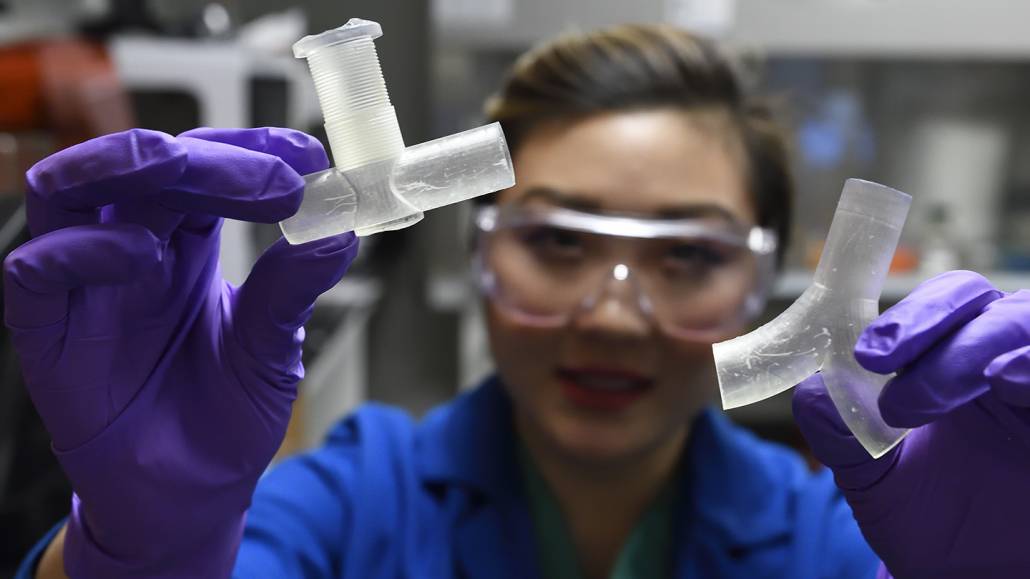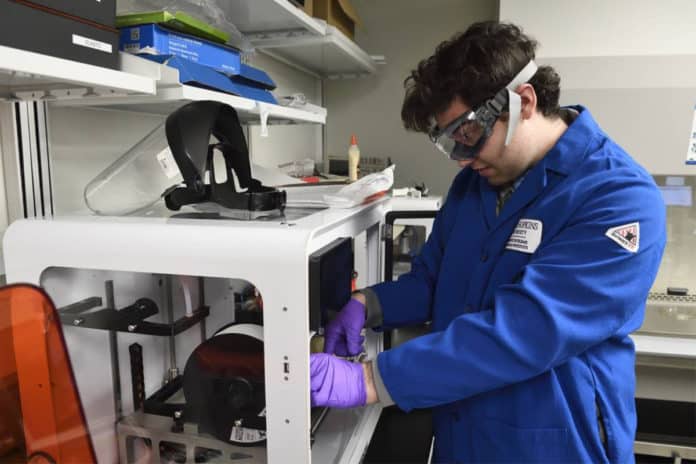3D Printed Ventilator Splitters
Developed By Johns Hopkins Engineers
A team lead by Johns Hopkins University Engineers is developing and prototyping a 3D-printed splitter, aiming to address safety concerns about cross-contamination and correctly managing airflow to patients, in response to the urgent need for more ventilators for treating COVID-19 acute respiratory disease syndrome patients.
This 3D printed splitter will allow treating multiple patients with a single ventilator. The team has designed this tool to address their concerns, though the medical professionals have expressed concerns about the safety and effectiveness of sharing ventilators.
At the Johns Hopkins Whiting School of Engineering, an assistant professor of mechanical engineering, Sung Hoon Kang, who is leading a team that includes ICU intensivists and pulmonary specialists at the Johns Hopkins School of Medicine said, “Right now, there is an emphasis on using engineering to develop open-source solutions to many aspects of the novel coronavirus crisis, but especially for ventilator design and production. Using one ventilator to treat multiple patients is one approach. It must also be safe all for the patients while this is feasible. Every patient must equally get the care they need. We set out to create exactly that.”

The leading cause of death for COVID-19 patients is a serious lung condition called acute respiratory distress syndrome, or ARDS. The amount of oxygen in the bloodstream will be limited by the fluid build-up in the lungs of individuals with ARDS and this leads to vital organs depriving of the oxygen they need to function properly. A ventilator can manage this condition.
Many health care facilities are struggling with a shortage of machines required to treat the sickest patients as the COVID-19 outbreak spreads.
Safety Concerns Of Sharing A Ventilator
The first concern is of the germs that could spread and a chance for cross-contamination can be created by hooking up several patients on the same ventilator. Another concern is that the necessary level of oxygen would not be given by a ventilator that is shared by multiple people and this could lead to high mortality rates and poor patient outcomes.
The team’s new design aims to safeguard against these risks, according to Kang. Clinicians can monitor and adjust airflow for each patient through the air-flow controller and flow meters included in the new design. As each patient requires different flow control, the air volume control is a key addition. Also, the team is working on preventing cross-contamination between patients by adding a filtered designed to prevent contamination.
Given the urgency of the need, the splitter must also be easy to deploy.
A junior majoring in biomedical engineering and a member of the team, Christopher Shallal said, “The design should be produced with simple manufacturing processes like 3D printing, we need a robust design. Different conditions and settings where people may be printing the ventilator splitters are also considered in the design. As we design, we are keeping scalability in mind.”
Previously, under dire circumstances, splitting ventilators have been used as an experimental emergency treatment. According to a member of the team, assistant professor of plastic and reconstructive surgery at Johns Hopkins Medicine, Julie Caffrey, a new and somewhat daunting set of design challenges are required for splitting a ventilator to treat multiple patients in varying stages of lung failure.
Caffrey explains, “It could be very unsafe when ARDS patients with different lung compliance use the same ventilator settings, as there could one patient receiving too much air and the other might not receive enough air. There is a risk of causing more trauma to lungs that are already very crippled if the low tidal volume and higher pressure cannot be managed. Being able to set the ventilator to a specific patient even when the ventilator is split is very important.”
The prototype has been produced by the team and within weeks, they hope to finalize and start testing their design on model lungs. For others to use, the team plans to publish their open-source design, once it is approved by the FDA.
A third-year medical student at the Johns Hopkins School of Medicine and a member of the team, Helen Xun says, ” Getting this technology to hospitals around the world and to the people who need it the most quickly is the goal here.”
Author: Prathibha HC



